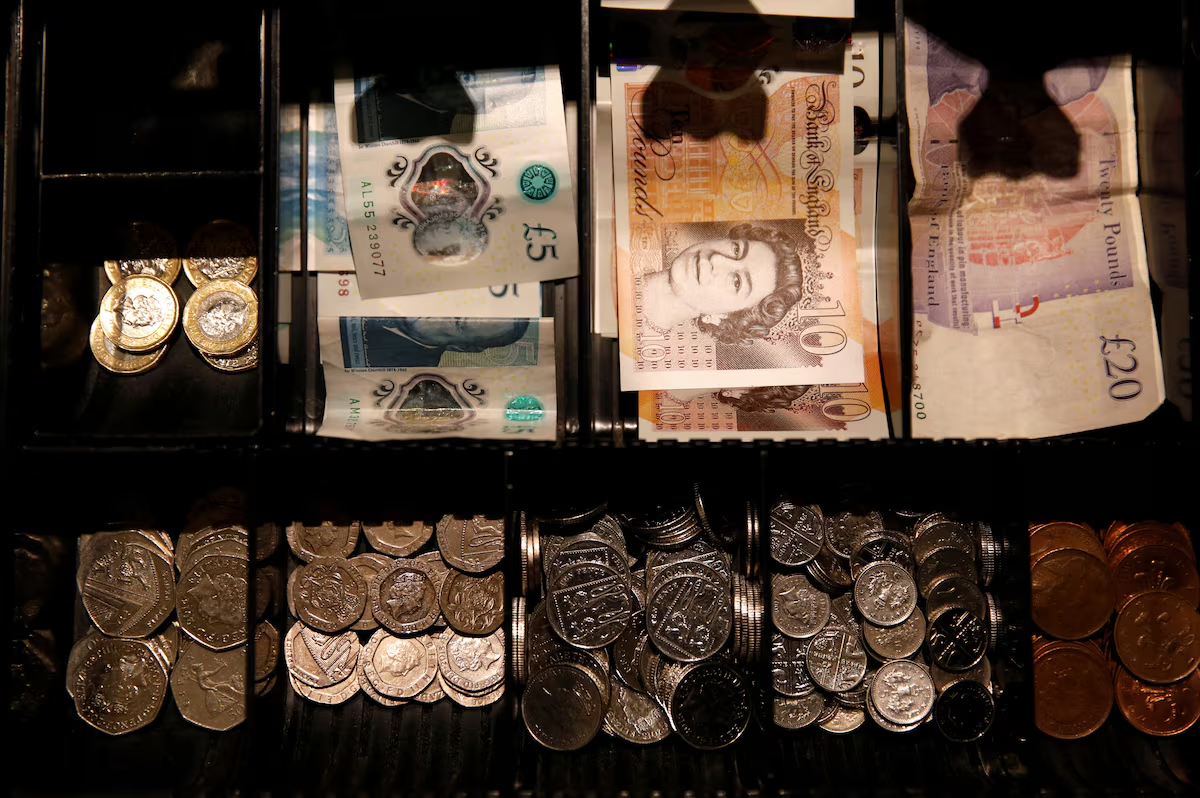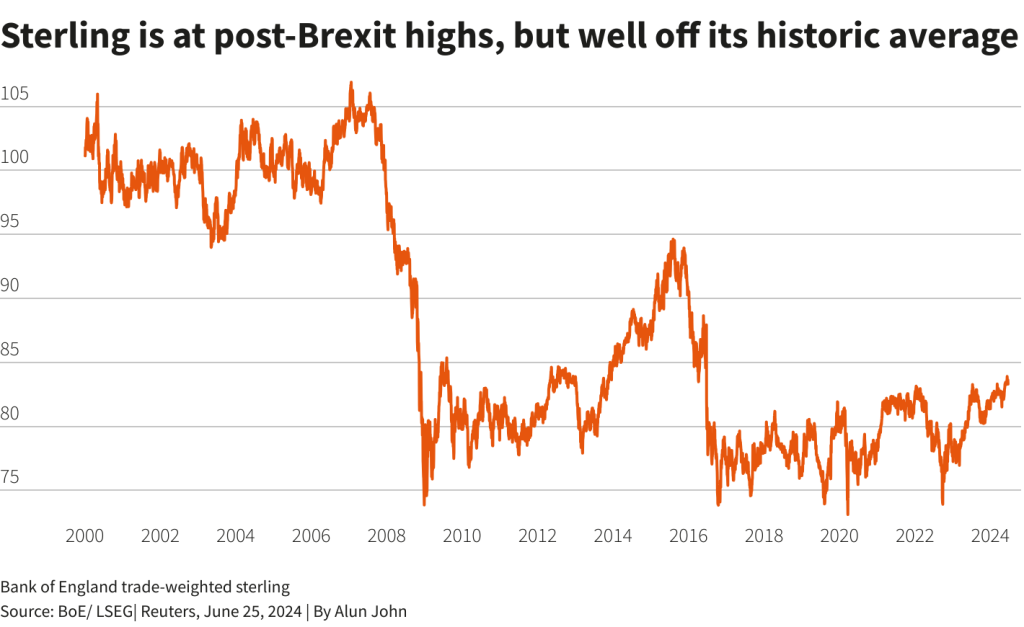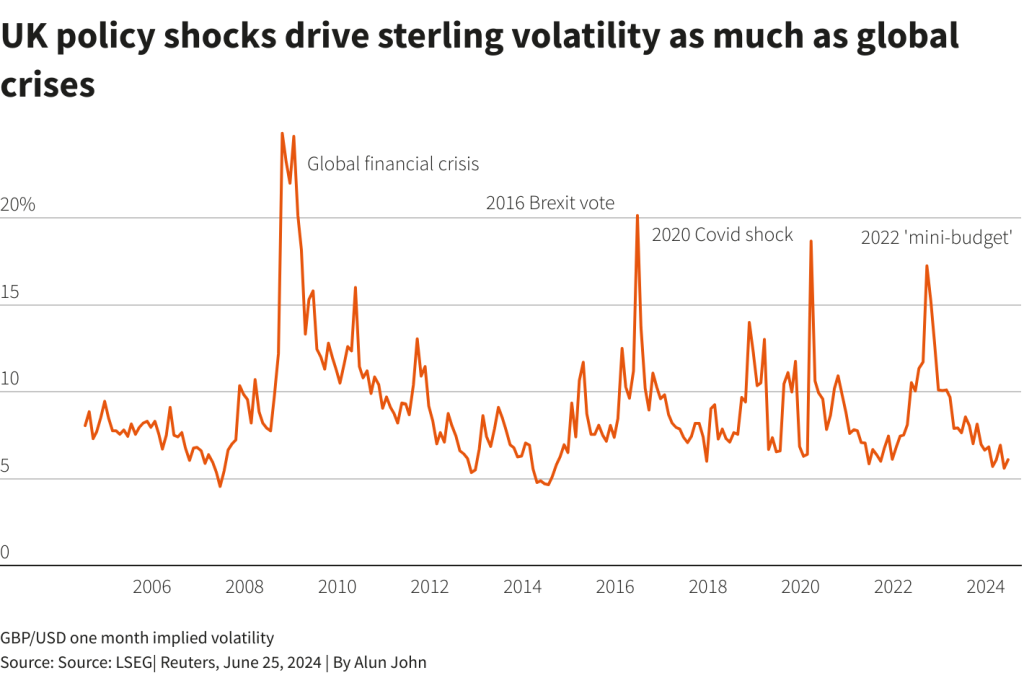
Britain’s pound has bounced, opens new tab ahead of an expected landslide election win for the opposition Labour Party but the currency’s future depends on the next government convincing skittish investors that its plans to fix a stagnant economy are credible.
On a trade-weighted basis sterling has returned to levels not seen since 2016’s Brexit vote as currency traders bet on a long era of currency volatility driven by tumultuous politics under the ruling Conservative party coming to an end.
If Labour wins on July 4, the left-of-centre government will need to keep investors’ trust while tackling economic challenges the Conservatives have not solved, more than 20 economists and former government officials said.
UK public debt-to GDP is at a 63-year high and foreign direct investment has fallen for four out of the last five quarters up to the end of 2023. To avoid spending cuts, Labour will need to hike taxes or increase borrowing, the Institute for Fiscal Studies think tank said, opens new tab.
As investors assess the next government’s response to these problems, the balance of risks for sterling is not even because the currency has already priced in a strong Labour majority boosting Britain’s growth.
“A less confident political scenario will weaken sterling much more and make it much more volatile,” said Liverpool university finance professor Costas Milas, who studies the relationship between economic policy uncertainty and financial markets.
Led by Keir Starmer, Labour is about 20 percentage points ahead of the ruling Conservatives in surveys.

GREAT BRITISH ‘PESO’
Once the world’s reserve currency, sterling is trading below the per-dollar average of the four decades before 2016 but at around $1.27 has outperformed all major peers this year.
It has swung back sharply from its record low of $1.03 in 2022 when former Conservative Prime Minister Liz Truss launched an under-funded mini-budget that sparked a bond market rout, raised debt costs and exacerbated inflation.
Sterling’s rollercoaster ride has prompted commentators to nickname the pound the “great British peso”, with parallels to risky emerging markets.
Its volatility has fed back into the UK economy, creating a negative feedback loop.

Milas’ research found, opens new tab that economic policy uncertainty in Britain since 2016 directly caused financial market stress including an increase in exchange rate volatility which in turn made the economy grow less than it otherwise would have.
A Labour government with predictable policies that markets support could reverse that cycle, analysts said.
“If Labour goes by the playbook and gives some sense of fiscal responsibility, that’s a great support,” PGIM Fixed Income global strategist Guillermo Felices said.
“The strength you’ve seen in sterling lately is ultimately about (expected) stability,” Morningstar strategist Michael Field said.
Money markets expect similar rate cuts from the Bank of England and the European Central Bank this year.
But while the mini-budget debacle showed that fiscal policy matters as much for sterling as interest rates, Labour’s exact policies are not yet known.
The IFS this week criticised both Labour and the Conservatives for issuing pre-election manifestos that it said had “hidden and ducked” the big tax and borrowing questions, creating a “knowledge vacuum”.
Labour did not immediately respond to an email requesting comment on its plans and the pound.
CUT OR SPEND?
Analysts expect sterling to drift up to $1.2875 in 12 months, on average, according to LSEG data. Some see risks further out.
Labour, which has not been in government for 14 years, is keen to shake off a past association as a tax-and-spend party.
Simon Harvey, Monex Europe head of FX research, said that currency traders were bullish on sterling in the short term because UK government finances gave Labour barely any opportunity to over-spend.
But if UK economic growth improves over time, he said “there is still that risk that Labour swings too far to the left, so people do want to see how this washes out long term and investment managers might not like the look of this over five years”.
Pictet Asset Management senior economist Nikolay Markov tipped Labour to follow a scenario of heavy investment that would prove inflationary and negatively impact UK bond markets and sterling.
Britain has grappled with higher inflation than other Group of Seven wealthy countries, with annual price rises peaking at 11.1% in 2022. A 10% sterling depreciation would add 1.3 percentage points to UK consumer price inflation over two years, Oxford Economics calculated.
Starmer has framed pledges to stimulate investment in housing and infrastructure, which echo U.S. president Joe Biden’s policies, as very long term.
“It is a poundland version of Bidenomics,” said Giles Wilkes, an Institute for Government fellow and a former adviser to British Prime Minister Theresa May. “It won’t involve market-troubling levels of money.”
Roger Bootle, a former economic adviser to 1990s UK finance minister Kenneth Clarke, said Starmer’s finance chief Rachel Reeves would likely “keep spending tight”.
But TS Lombard head of macro and former Treasury adviser Dario Perkins said that if Labour cuts strained public services further, angry voters may drift towards populist parties, dousing hopes of the UK rebuilding trade links with Europe.